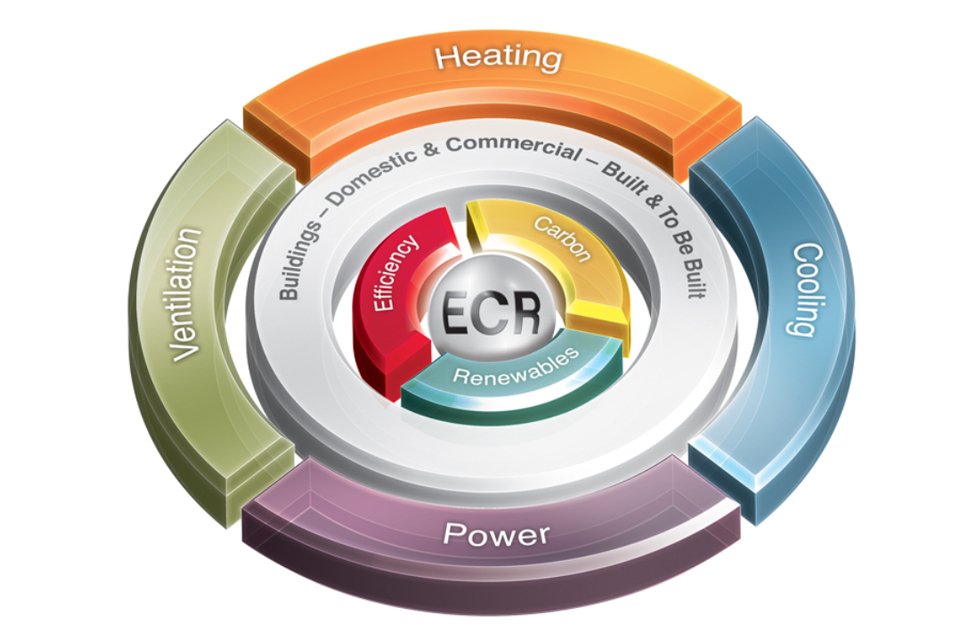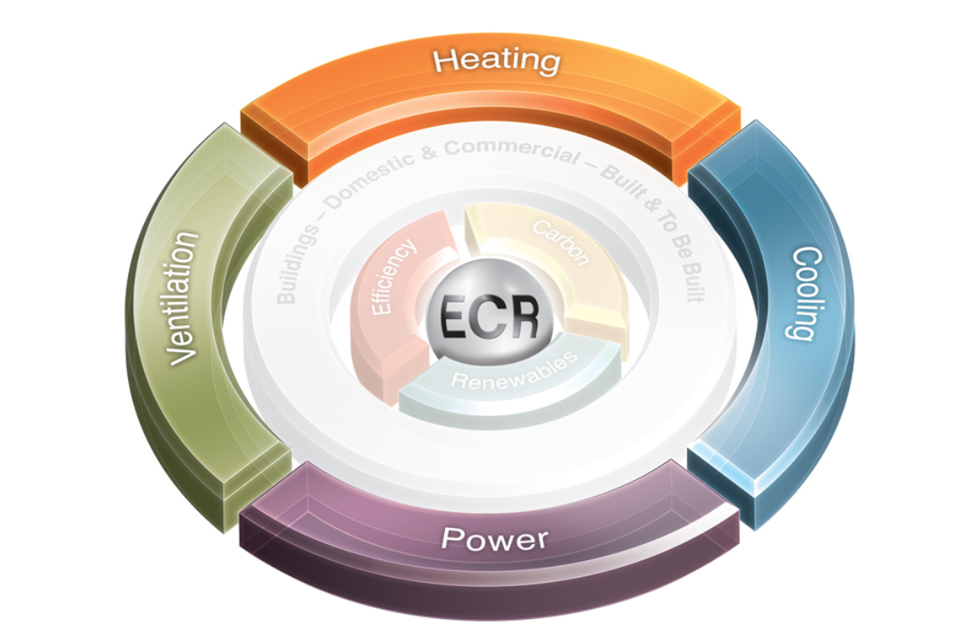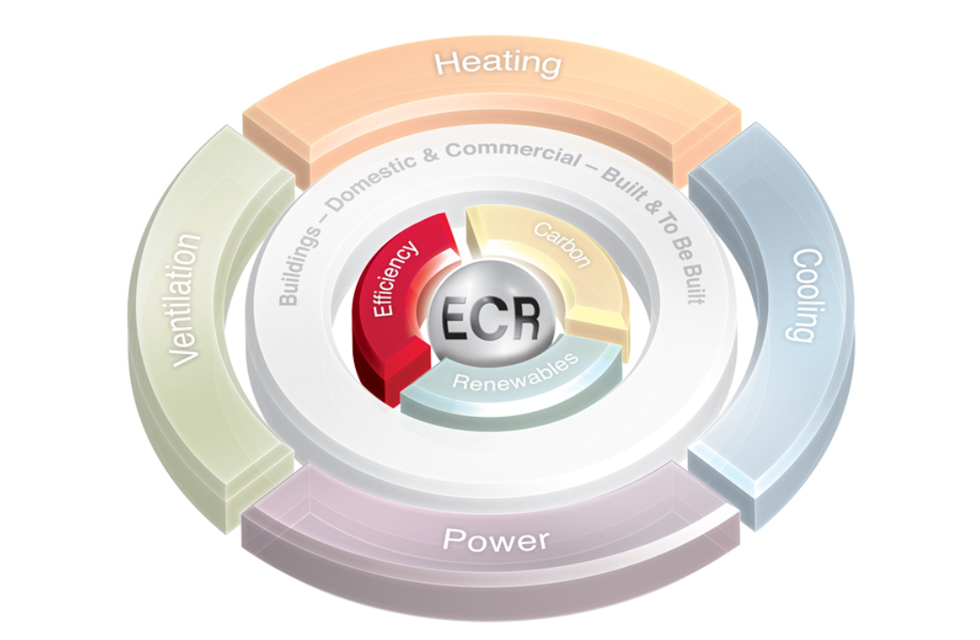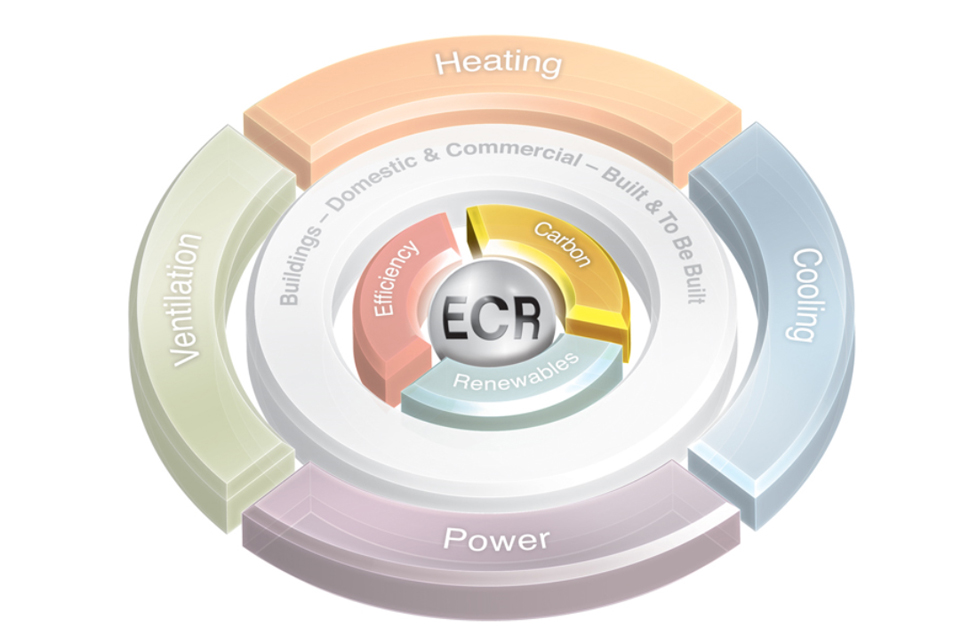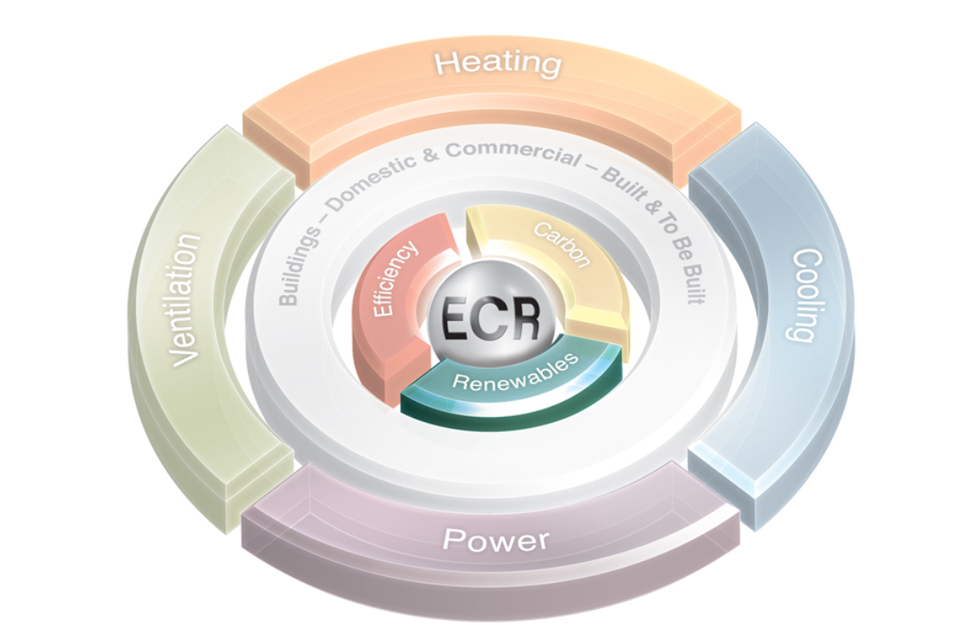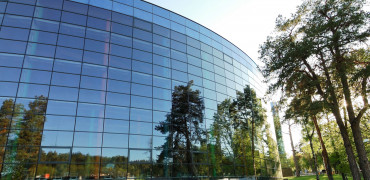At the same time however, we want our buildings to be energy efficient, less carbon intensive and use more renewable technologies.
As the industry responsible for producing, specifying and maintaining the technology that can answer these needs, everyone in the building services sector needs to find ways of delivering what a building wants while addressing the challenges of what it needs to achieve.
At Mitsubishi Electric, we’re aware that reconciling these needs and wants has changed the way equipment purchases have to be made.
That is why we have developed what we call the “ECR” approach which should be adopted once every possible measure has been taken to reduce the overall energy demand.
Firstly, the heating, cooling, power and ventilation requirements should be delivered in ways that are as EFFICIENT as possible. Next, they should help the building emit lower amounts of CARBON and finally, wherever possible, they should incorporate RENEWABLE energy.
This ECR approach places Efficiency, Carbon reduction and increased use of Renewable energy at the centre of every decision-making process in respect of fulfilling a building’s heating, cooling, ventilation and power requirements.
Efficiency – apply the right solution
Maximum efficiency is paramount: The cheapest and cleanest kilowatt of energy is the one you do not use. Achieving this means more than just sealing a building’s envelope – it also requires the selection and correct specification and installation, maintenance, monitoring and operation of the most energy-efficient technologies available.
Short-term decisions need to give way to those that take a whole lifetime view.
As their costs increase and availability decreases, the use of fossil fuels on site become a less and less attractive option – especially as the technologies that burn them are already at the peak of their efficiency.
Greater economies can be realised by switching to alternatives, indeed, a future with electricity as the only point-of-use energy is now both possible and desirable due to the lower direct emissions this will generate moving forward.
As a country, we still facing challenging targets and time is running out. As an industry, we need to engage all key players and to move towards viable lower carbon solutions.
Carbon – reducing emissions
Buildings in all their forms account for 44% of the UK’s CO2 emissions. Reducing this burden and specifically those emissions generated by heating – and by cooling and ventilation in some commercial properties – is key.
This can be achieved through innovating more efficient products, removing the direct use of fossil fuels from buildings, recovering waste heat to use elsewhere and replacing equipment in a timely manner.
Renewables – refreshing the energy supply
The UK building stock is able to accommodate renewable technologies relatively easily.
We are also fortunate that our climate is often ideal for supplying renewable energy via currently available technology.
Renewable solutions for use in buildings are varied and span both heating and power generation. Their inclusion gives buildings a level of energy independence and the skills exist to incorporate them.
The task ahead of us is so large that we rapidly need to find those mass-market solutions that can deliver the savings we require as soon as possible.
Also, historically, those in contact with renewable solutions are generally more aware of their energy use; this has greater effects in society than just the building where the solution is provided. Therefore, the widest possible inclusion of low and zero carbon solutions in UK buildings is required.
As a country, we still facing challenging targets and time is running out. As an industry, we need to engage all key players and to move towards viable lower carbon solutions.
If you would like to join the discussion further, visit our Green Gateway Twitter page @green_gateway
Martin Fahey is Head of Sustainability & Commercial Business at Mitsubishi Electric and coordinator of the company’s Green Gateway programme.
If you have any questions about this article or want to know more, please email us. We will contact the author and will get back to you as soon as we can.

